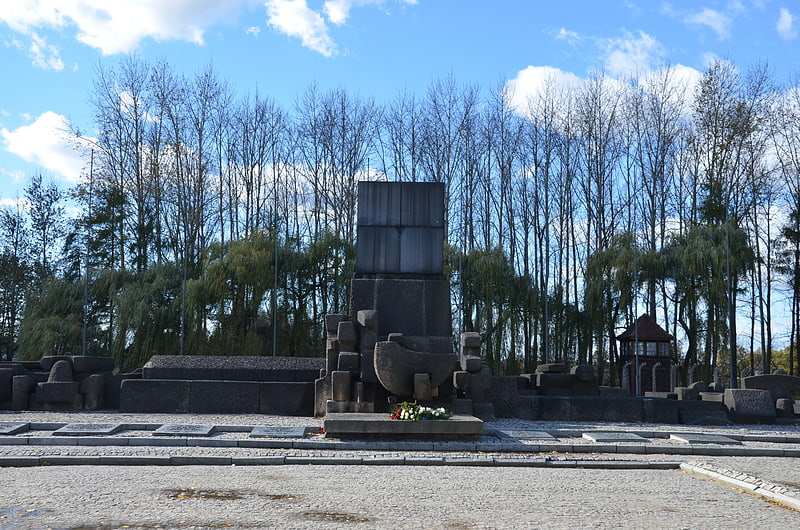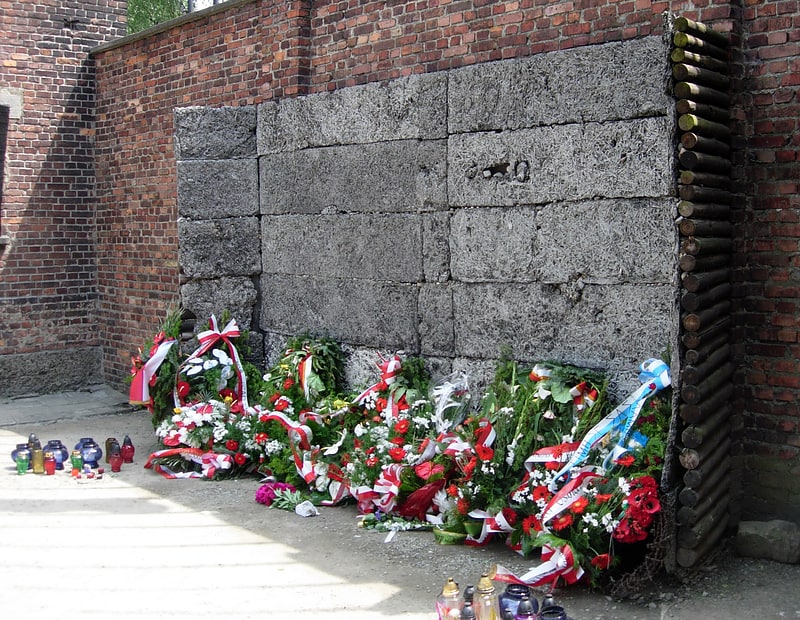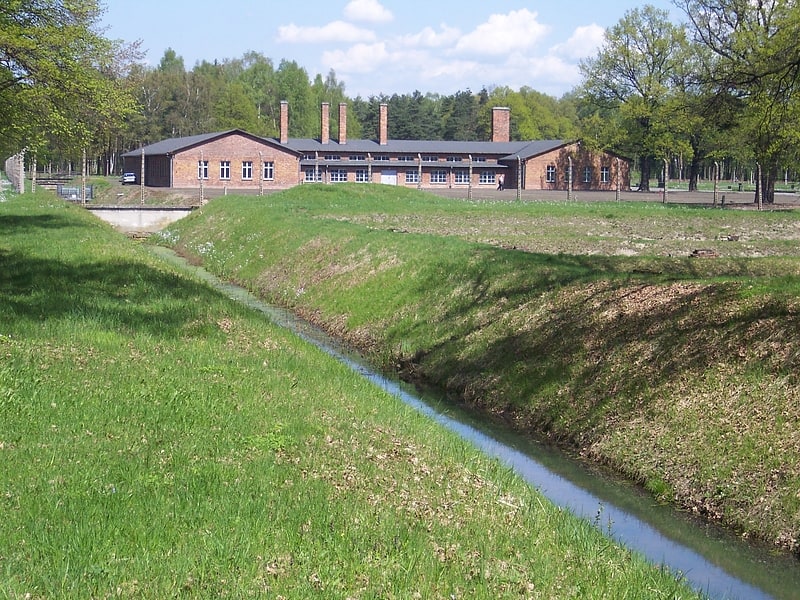Discover 10 hidden attractions, cool sights, and unusual things to do in Auschwitz-Birkenau (Poland). Don't miss out on these must-see attractions: Auschwitz-Birkenau State Museum, International Monument to the Victims of Fascism, and Theresienstadt family camp. Also, be sure to include Kościół pw. Najświętszego Serca Pana Jezusa w Bieruniu Nowym in your itinerary.
Below, you can find the list of the most amazing places you should visit in Auschwitz-Birkenau (Lesser Poland).
Table of Contents
Auschwitz-Birkenau State Museum

Also known as: Państwowe Muzeum Auschwitz-Birkenau w Oświęcimiu
Museum in Poland. The Auschwitz-Birkenau State Museum is a museum on the site of the Auschwitz concentration camp in Oświęcim, Poland.
The site includes the main concentration camp at Auschwitz I and the remains of the concentration and extermination camp at Auschwitz II-Birkenau. Both were developed and run by Nazi Germany during its occupation of Poland in 1939–1945. The Polish government has preserved the site as a research centre and in memory of the 1.1 million people who died there, including 960,000 Jews, during World War II and the Holocaust. It became a World Heritage Site in 1979. Piotr Cywiński is the museum's director.[1]
Address: Więźniów Oświęcimia 20, 32-603 Oświęcim
International Monument to the Victims of Fascism

Sculpture by Pietro Cascella. The International Monument to the Victims of Fascism is a commemorative monument in the Auschwitz II–Birkenau concentration camp in Birkenau in southern Poland. It lies at the western end of the railway lines which cross the camp from the main gate. The monument was designed by Italian architects Andrea and Pietro Cascella, and executed in collaboration with Polish and Italian artists Jerzy Jarnuszkiewicz, Julio Lafrente and Giorgio Simoncini. Completion of the monument took about nine years. It was dedicated on 16 April 1967. Trees were planted behind the monument by the people of Brzezinka.[2]
Theresienstadt family camp

The Theresienstadt family camp, also known as the Czech family camp, consisted of a group of Jewish inmates from the Theresienstadt ghetto in Czechoslovakia, who were held in the BIIb section of the Auschwitz II-Birkenau concentration camp from 8 September 1943 to 12 July 1944. The Germans created the camp to mislead the outside world about the Final Solution.
Deported from the ghetto in seven transports in September and December 1943, and May 1944, the prisoners were not subjected to selection on arrival, an unusual situation in Auschwitz, and were granted several "privileges", including the creation of a children's block that provided the only attempt at organized education at Auschwitz. The living conditions nevertheless remained poor and the mortality rate was high. Most of the inhabitants who did not die of starvation or disease were murdered during the camp liquidations on 8–9 March and 10–12 July 1944. The first liquidation was the largest massacre of Czechoslovak citizens in history. Of the 17,517 Jews deported to the family camp, only 1,294 survived the war.[3]
Kościół pw. Najświętszego Serca Pana Jezusa w Bieruniu Nowym

Najświętszego Serca Pana Jezusa Church - a Roman Catholic parish church located in Bieruń, in the district of Bieruń Nowy.
Address: Warszawska 295, 43-155 Bieruń
Execution wall

Memorial
Auschwitz II concentration camp

Museum
Czerwony Domek

The Red House, the first makeshift gas chamber in Auschwitz II-Birkenau, and the second in the entire Auschwitz-Birkenau camp, as it was previously used as an adapted morgue in the main camp. The colloquial name of the building comes from its unplastered brick facade. It was located on the grounds of Auschwitz II, and the plot of land on which it stood was moved out of its territory after the war when the museum was established.
Bath/Disinfestation facility "Sauna"

Auschwitz cross

The Auschwitz cross is a cross erected near the Auschwitz concentration camp.
Carmelite nuns opened a convent near Auschwitz I in 1984. Edgar Bronfman, president of the World Jewish Congress called for the removal of the convent. Public statements from Theo Klein, president of the Council of Jews in France, Jewish activist Serge Klarsfeld, and Gerhard Riegner, representative of the World Jewish Congress, also demanded the removal of the convent. The American branch of the World Jewish Congress also protested with statements from chairman Wolfe Kelman and the Orthodox faction representative Zvi Zakheim. Representatives of the Catholic Church agreed in 1987. One year later the Carmelites erected the large cross to commemorate Pope John Paul II's 1979 Mass for some 500,000 people on the grounds of the Auschwitz II (Birkenau) extermination camp. This mass took place just outside Block 11, a torture prison in Auschwitz I, visible from within the camp. The Carmelites remained in their convent until 1993 and moved then to a new convent nearby; their cross was not removed.[4]
Kościół pw. Świętego Mikołaja w Polance Wielkiej

St. Nicholas Church in Polance Wielka - currently an unused wooden church located in Polance Wielka, Oświęcim County, Lesser Poland Province. It was built in the first half of the 16th century, in 1658 rebuilt in Baroque style. Until 1991 it was a parish church of St. Nicholas Parish in Polance Wielka, then it was taken over by a new temple dedicated to St. Nicholas. Then a new temple of the Nativity of the Blessed Virgin Mary took over its function. The church is located on the Wooden Architecture Route of the Małopolska province.
Address: 26 Kościelna, Auschwitz-Birkenau